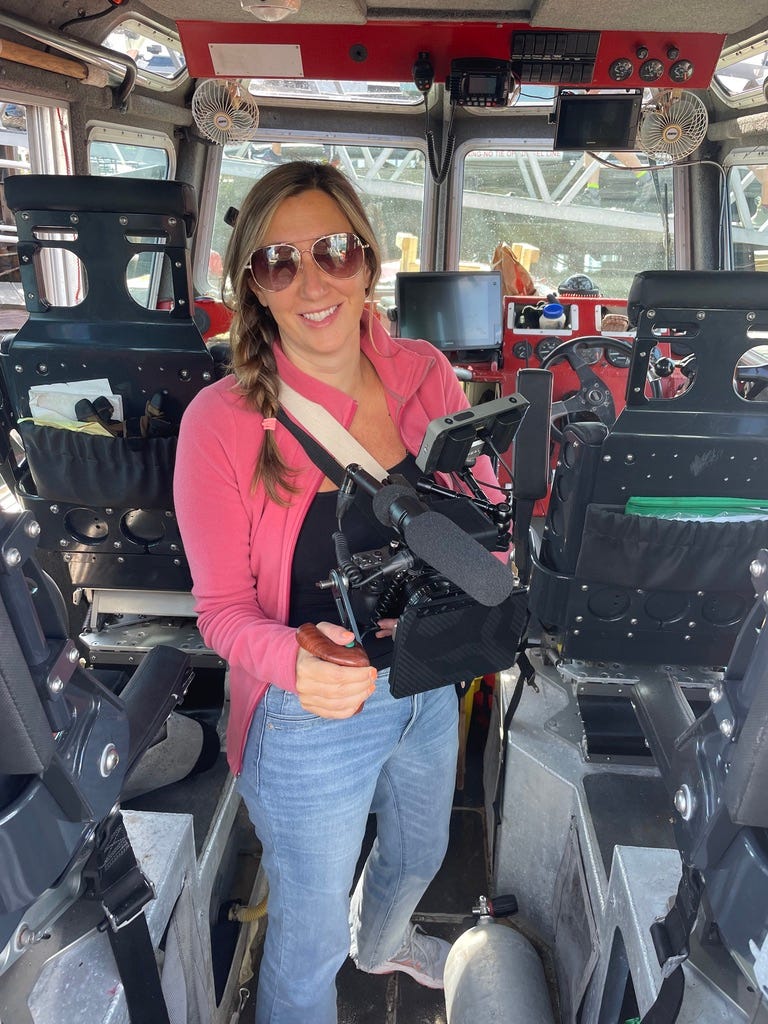Playing the Long Game as an Independent Filmmaker
The director, Kim DiVincenzo. The documentary, Labor of Love.
Kim DiVincenzo grew up north of Boston, surrounded by historic harbors, rocky coastlines, and expansive sandy beaches—a landscape that embodies both the dreams and challenges of a mariner. Her passion for the arts blossomed when she took a cinema class at Northern Essex Community College, igniting her love for film. She later transferred to Emerson College in Boston, where she earned her Bachelor of Arts in Visual Media Arts, followed by a Master’s in Integrated Marketing Communications. It was after college that Kim truly began to carve her path in the creative industry.
Kim: After working in the indie scene for a bit, I got into advertising making commercials, brand videos and short docs/testimonials for clients like Virgin Voyages, CVS, Wayfair, Staples, Fidelity, Stop & Shop and Vistaprint. I’m naturally inquisitive and enjoy learning about people and their experiences – so I suppose it makes sense that I am working on a documentary, but it wasn’t a goal. The opportunity presented itself rather organically and I jumped at the chance.
The story of her current documentary, Labor of Love, dates back to 2013 and the government auction and disposal of Graves Light, an offshore lighthouse at the entrance of Boston Harbor. Two bidders found themselves in a bidding war, ending at just below one million dollars at $933,888. A record sale for a lighthouse that stands today. The winner, Dave Waller, who would later soon partner with his bidding rival.
Kim: I’ve worked with Brickyard VFX a lot over the years and that is how I know Dave. I knew he owned a lighthouse, but I didn’t know the full depth of the story until Adam Mikaelian, our cinematographer, volunteered to film out at the lighthouse one day.
Originally, we just planned to film out there for a day or two and cut together a 2-minute video documenting the installation of a first-order Fresnel lens. Then after spending some time with Dave and hearing about the bidding war, the renovation, the battle with Hull and meeting all the folks involved, I realized there was bigger story. One that raises awareness around the importance of historical preservation and one that celebrates the creativity and community that made the project possible. To me, the latter is the heart of the film and what really excites me.
So many people pulled together to do this crazy thing and it happened right here in Boston— in the middle of the ocean—with boats, pulleys, helicopters and a ton of New England scrappiness. It’s an incredible example of creativity, ingenuity and determination.

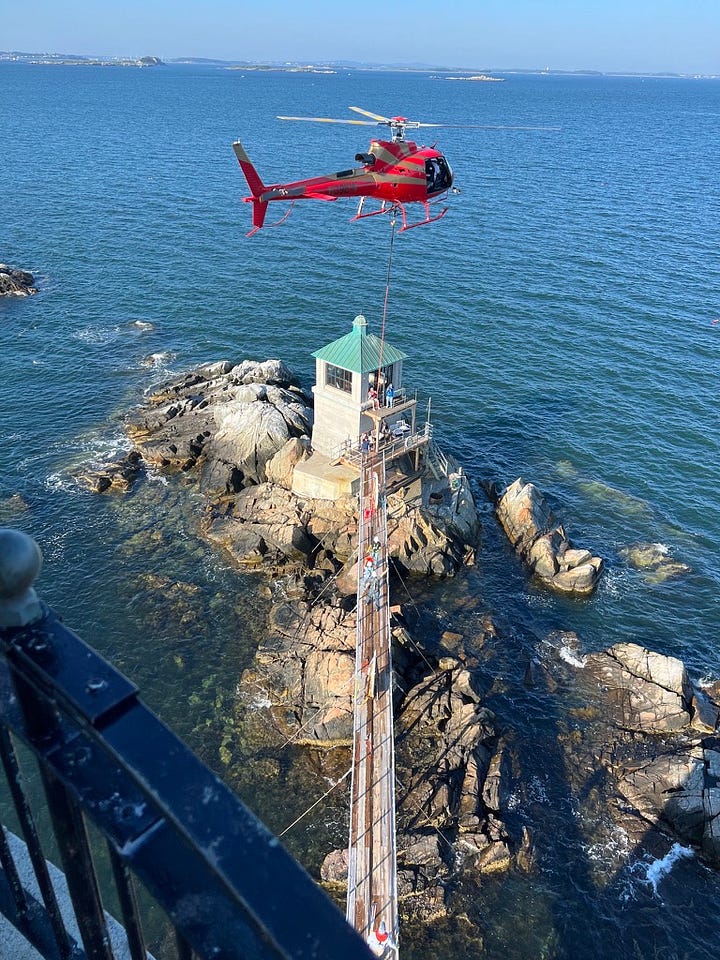

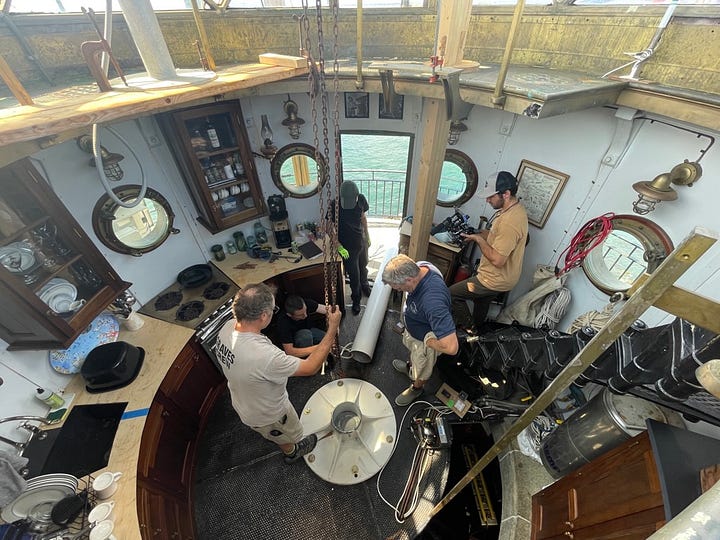
Filming at a lighthouse can be dangerous, unpredictable and sometimes fruitless if the weather and seas aren’t cooperating. Like the owners and restoration professionals experience themselves, getting materials on the island or even just landing at these locations can be extremely difficult or impossible, which makes filmmaking, all the more challenging. Kim and her team had to prepare and stay nimble for every trip, from the gear they brought to the proper footwear.
Kim: As far as filming goes, it comes down to being prepared and packing light since getting to the lighthouse is a bit of a process. First, you take a boat out 20-30 minutes to a mooring near Graves. After mooring up, you carefully get in a dingy with all of your stuff and row over to the rocky edge of the lighthouse. From there you climb a short, rung ladder to the first platform. There is a pully system, so you can lift heavier items from the rocky ledge up to the main platform. Once you are on the main platform you climb a 40ft rung ladder to get to the first floor of the lighthouse. There is another pully system there as well, so you can hoist up whatever you need. We try to limit our gear to about 2-3 pelican cases and approach the shoot day strategically, so we don’t have to keep hoisting the cases up and down. It’s really important to pay attention to where you are walking/standing and to remember to keep 3 points of contact when climbing the ladder. Wearing the right shoes and bringing layers is key.
But how does one budget for and finance a feature of this scale? It requires determination, a small, dedicated crew, and the ability to find supporters willing to back the project.
Kim: Our day-to-day team is small since we are still in fundraising mode. We have filmed about 60% of the film and I am hoping to secure the funding needed to finish the film and cover distribution costs by the end of the year.
To create the trailer and capture the footage we’ve filmed to date, many of our friends/colleagues have volunteered their time and skills to help. I’m extremely grateful that so many people are excited about the project and want to be a part of it.
At the moment, it is mostly self-funded but we are pursuing a combination of grants, donations, sponsors and investors to raise the funding to finish the film. We recently received our first grant which is very exciting and are currently pursuing some potential partnerships.
What advice does Kim have for those seeking funding? It’s essential to target the right audience and cultivate meaningful relationships. This often involves uncovering a story that resonates deeply with potential supporters.
Kim: First you need to identify the audience and the type of funders that would be interested in your film. Then you need to build a strong pitch deck that clearly conveys the story, themes, vision and the opportunity for potential funders. Then you are ready to start your outreach. At the end of the day, raising money is about building relationships. It takes time, patience and a lot of polite persistence.
One of the primary reasons for securing proper funding is distribution. This can be a major hurdle for many filmmakers once their project is complete and ready for audiences. Key considerations include which festivals to target, where to premiere the film, and whether to pursue a direct-to-streaming release.
Kim: We are targeting a few strategic festivals where we can hopefully secure a distribution deal with a streamer or network. I plan to attend AFM this November with the goal of creating connections and beginning to build relationships with potential distributors. Additionally, since this is a New England-based story, we are also looking to screen the film at local theaters.
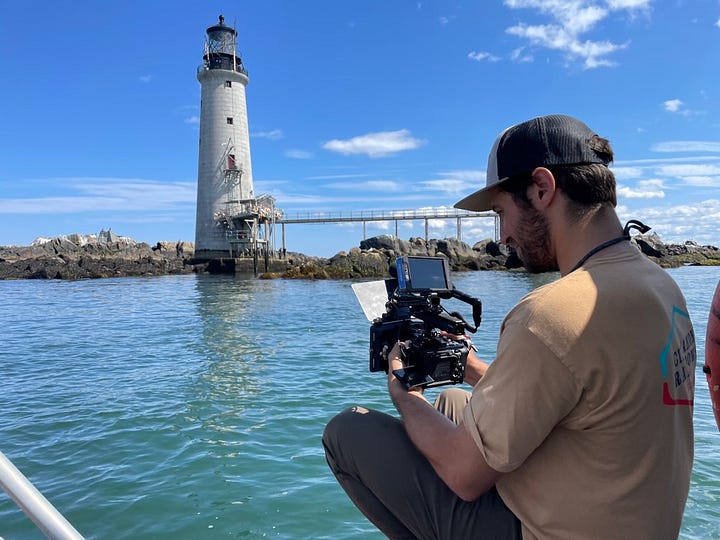
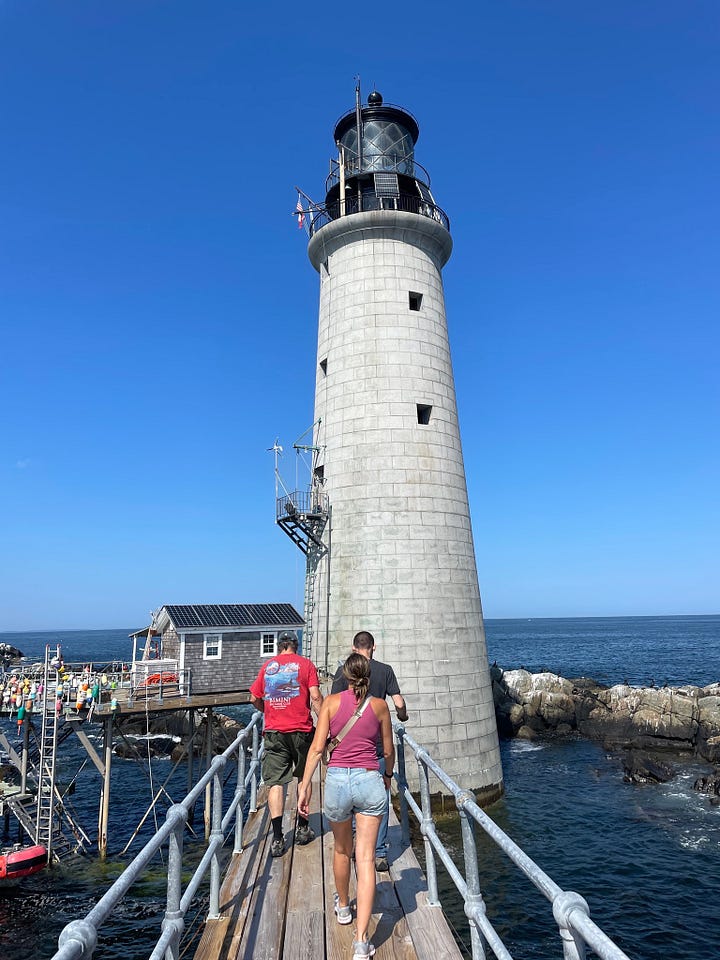
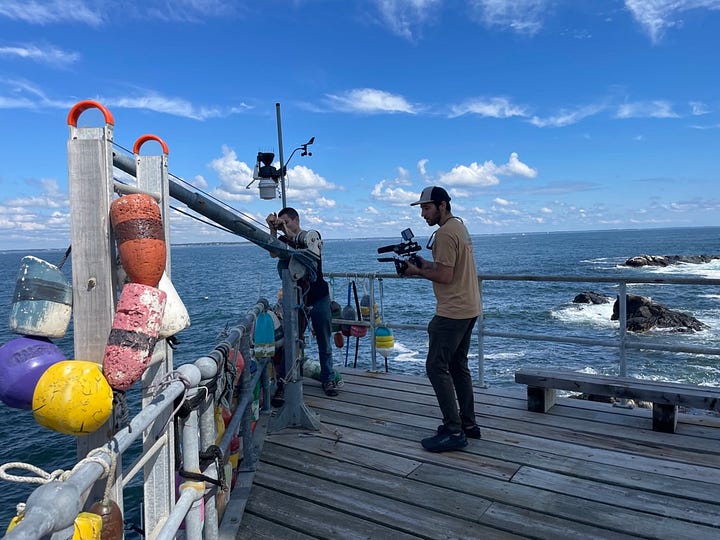

For many independent filmmakers, the process can be arduous and disheartening. Filmmaking demands significant resource and a great deal of patience.
Kim: Independent filmmaking is a long game. Raising money takes time and it’s hard. As a commercial director, I’m used to working with existing budgets and tight deadlines. So, it’s easy to get down on myself for not being as far along as I had hoped. I’m trying to give myself more grace in that regard and appreciate the progress we have made. My advice to aspiring filmmakers would be to give yourself deadlines to keep the momentum but don’t beat yourself up too much if you miss one. Instead celebrate the progress that has been made. I recently made a list of all the things that we’ve done for the film in the past six months and that was eye-opening. I said to myself “oh wow, we’ve accomplished more than I realized.”
Kim DiVincenzo is the director behind the documentary, Labor of Love. You can learn more and donate to the film at laboroflovefilm.com




